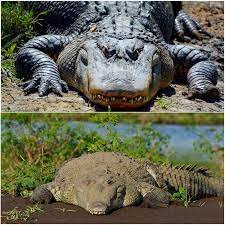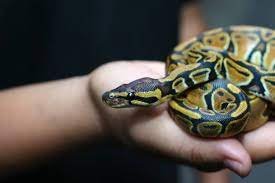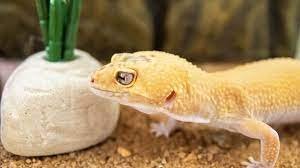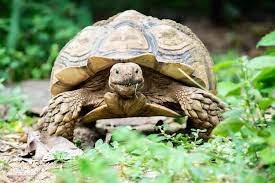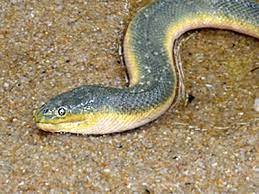Bearded dragons, also known as “beardies,” are large lizards that can be found naturally only in Australia. They come in a wide variety of shades, but the most common ones are a sandy tan to brown, with a lengthy, bushy tail and a spiky, beard-like collar. They make great pets, even for inexperienced reptile owners, but they have specific dietary and environmental requirements. Bearded dragons require a lot of time and effort, as well as specialized equipment. Still, they are friendly and easy to train, and they display an array of fascinating behaviors that make them entertaining to observe.
Bearded Dragon: Care Guide

Do you want a reptile as a first pet or do you want to add to your collection as a seasoned expert? Whatever the case may be, the Bearded Dragon is a sociable and adaptable creature that is suitable for first-time pet owners thanks to its mild temperament and low maintenance needs.
Bearded dragons, or Beardies, can be found in the wild all over Australia, both in the trees and on the ground. These reptiles are famous for their wide-mouthed “smiles,” which are actually just an attempt to relax.
It requires little effort to maintain. They particularly like eating insects and dark greens. In a zoo or other enclosed environment, you can observe them basking in the sun’s rays or resting in the shade. They are among the most popular species of reptiles because of how well they respond to human interaction.
If this adorable dragon has caught your eye, you may be wondering where and how to purchase one, as well as what kind of care you can expect to provide for it.

Australia is home to a large, semi-arboreal lizard native to both trees and the ground. Spines on both sides of their bodies extend through the middle of their tails, which can reach a length of 15-20 inches. The skin fold under their chins is used to ward off potential threats, hence the name.
All eight species in the genus Pogona are commonly known as Bearded Dragons. They were formerly classified with the Amphibolurus genus but have since been moved to the Pogona group. Among these six species, Pogona vitticeps is the most well-known because it is the most welcoming and requires the least amount of maintenance.
Bearded Dragon Behavior and Temperament

They’re bred all over the country. As a result, finding a reputable breeder is simple, and there are many of them. They quickly adjust to life in captivity and are very tolerant of human interaction. It is common knowledge that lizards are primarily diurnal, meaning they are active during the day.
The bearded dragon’s common name comes from the ring of spines that protects its neck. Spines of this type are typically horizontal. However, when threatened, a dragon’s throat will enlarge and its spines will protrude. Captive bearded dragons are typically tame, so owners rarely witness aggressive behavior from their pets. Daytime-active and generally tolerant of human contact, these animals thrive in zoo settings. Indeed, many of these pets take great delight in perching atop their owners’ heads. Male bearded dragons, on the other hand, need to be kept in separate quarters because of their territorial tendencies.
Physical Characteristics of Bearded Dragons
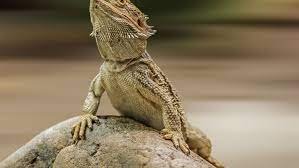
Bearded dragons range in color from tan to yellow. The name “bearded” comes from the dragon’s tendency to puff out its throat skin in defensive or territorial displays. When the dragon is scared, its flattened body shape becomes even more pronounced. The neck, both of the animal’s heads, and both of its bodies are all armed with spines. Bearded Dragons have elongated, wedge-shaped heads, and their tails are nearly as long as their bodies.
Also, know Do hamster sleep?
Hatchlings and young animals have a hard time being sexed. Sexual differences are more pronounced as individuals mature into adulthood. Males typically have larger heads and darker beards. Men can be easily identified from women because of the femoral pores.
Caring for the Bearded Dragon

A 55- to 75-gallon tank with a sturdy screen top is perfect for a single adult bearded dragon. Juveniles can start out in smaller tanks, but they’ll soon outgrow them. Bearded dragons are able to adapt to both terrestrial and arboreal (tree-dwelling) environments, and they often enjoy perching above the ground. Provide them with rocks, log halves, and branches to climb on, particularly in the tank’s basking zone. Provide your bearded dragon with plenty of places to hide, like hollow logs. All of this needs to be considered by anyone thinking about getting a bearded dragon.
Bearded dragons as pets benefit greatly from exposure to ultraviolet light. Pet stores stock special fluorescent bulbs that emit UV light. Depending on the type of bulb, your bearded dragon can get within 12 inches of these lights to absorb the UV rays. Do as the manual tells you to. The lights should be directed through a screen top rather than glass because glass blocks some UV rays.
Substrate

A substrate is what you put in the bottom of the cage for your bearded dragon. Humidity is kept up and the tank can take on a more natural appearance. Juveniles shouldn’t be placed on sand or another loose substrate. The risk of accidental or curious ingestion, leading to intestinal impaction, is too high. An alternative would be to use paper towels or a reptile carpet.
How to Feed a Bearded Dragon?

As omnivores, Bearded Dragons require a varied diet that includes both meat and plants. Babies gorge themselves on ants and worms. As they grow, they will start to eat more vegetable matter. A young dragon’s (age 2-4 months) diet will primarily consist of insects, with about 20% coming from greens. Two or three feedings per day are ideal for young dragons. When young bearded dragons aren’t getting enough to eat, they may start nibbling on each other’s tails and toes.
Pinky mice (for adults) and insects such as:
- Pinhead crickets for kids, or crickets, is what you want.
- Chowder worms
For example, wax worms are relatively high in fat and should be consumed in moderation.
- A king worm
- The Worms of the Ground
- Roaches
Common Health and Behavior Problems

Bearded dragons often succumb to metabolic bone disease, one of the deadliest conditions that can strike them. An improper ratio of calcium to phosphorus causes this. It can cause bone softening, which increases the risk of bone fractures.
Bearded dragons, like most other reptiles, can get respiratory infections. Excessive mucus production in the nasal passages and mouth is a common symptom.
Bearded dragons, like all other pets, can range widely in price. The market value of a bearded dragon can fluctuate based on factors such as:
- Age
- Color
- Gender
- When acquired from a breeder or a pet store
- Type (morph or non-morph and how widely bred it is)
Considering the foregoing, a prospective buyer can anticipate paSelecting a bearded dragon that is lively and has healthy-looking skin. Joint swelling, nasal or oral discharge, skin discoloration, and loose stools are all causes for concern. The price range per dragon is $35-$1000.

